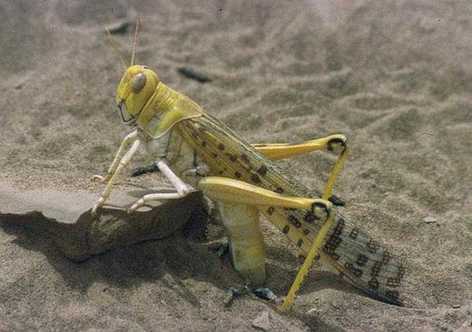Seasonal rains in Sahel are favourable to locust breeding
 0 Comment(s)
0 Comment(s) Print
Print E-mail China.org.cn, September 29, 2012
E-mail China.org.cn, September 29, 2012
 |
|
The desert locust is potentially the most dangerous of the locust pests because of the ability of swarms to fly rapidly across great distances. [File photo] |
As a result of unusually good rains and ecological conditions this summer, a second generation of Desert Locust breeding started this month in northeast Mali, in northern and central Niger and in northeastern Chad, according to the Food and Agriculture’s Locust watch.
Hatching is likely to commence in the coming days in these countries. Hoppers are expected to be present during September and October, and fledging could start by mid-October, leading to an increase in the number of adults during the second half of October and in November.
The Inter-Tropical Convergence Zone (ITCZ) has started to retreat southwards over the Sahel. Consequently, seasonal rains will end soon. As vegetation dries out, hoppers will concentrate and form small groups and bands while second generation adults will form small groups and swarms. The latter are likely to migrate in November from the northern Sahel in Mali, Niger and Chad to southern and central Algeria and Libya, to northwest Mauritania and perhaps reach southern Morocco. So far, a few small groups of first generation adults have been seen in Niger and Chad, and one small swarm was reported in Chad.






Go to Forum >>0 Comment(s)